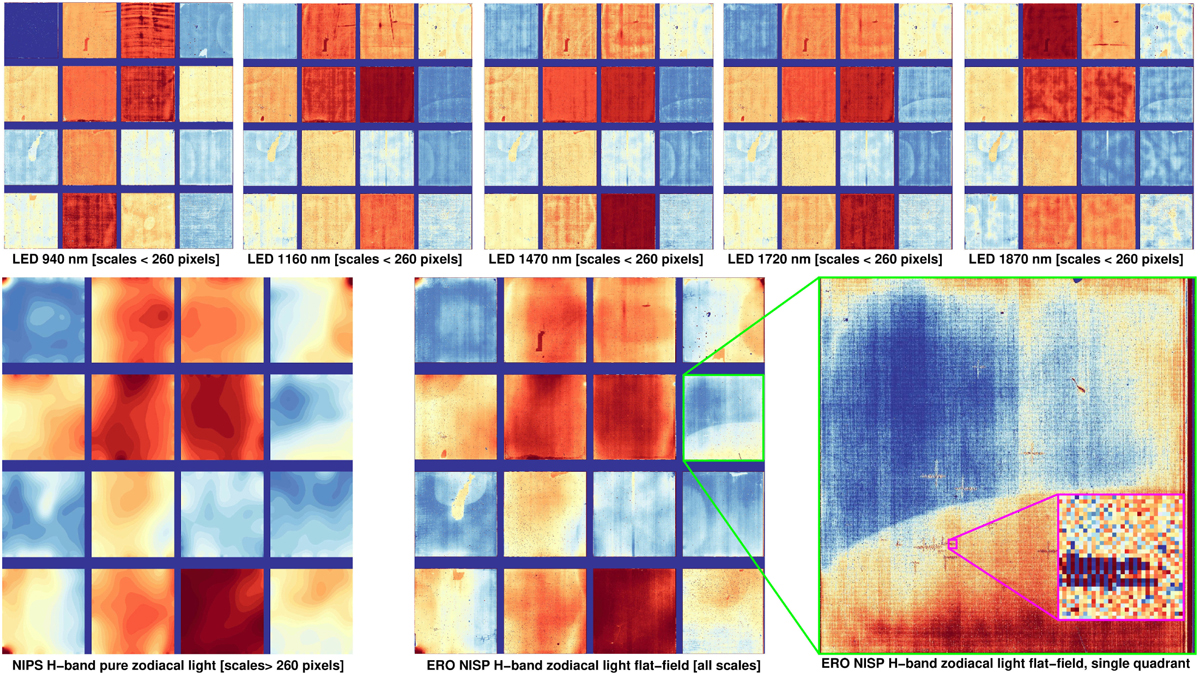Fig. 13

Download original image
ERO NISP zodiacal light flat-field. This combines the large scales (>80ʺ) derived solely from zodiacal light observed in any NISP exposures with the small and medium scales (<80ʺ) coming from specific LED internal calibration images tailored to each NISP band (only three LEDs were relevant for this purpose: 1160 nm, 1470 nm, and 1720 nm for YE, JE, HE, respectively). The arbitrary colour scale is used to fully explore the intensity range within each image. The top row displays the evolution of {gain × quantum efficiency} across all 16 NISP detectors at specific wavelengths, highlighting a large-scale pattern that is, however, omitted in the final flat-field in preference to the pattern emanating from the zodiacal light image (bottom left). The completed ERO NISP zodiacal flat-field (bottom centre, for HE) encapsulates all scales present in the Euclid signal, ranging from pixel-to-pixel sensitivity variations and low-to-medium-sized features (bottom right, showing a detector of 612ʺ × 612ʺ, with a zoom on a 30 by 30 pixels area showing the pixel-to-pixel sensitivity differences), extending to the entire FoV scale. The relative colour range from dark blue to deep red is an intensity ratio of 12% on average across the full mosaic panels and 5% for the variations across the single detector on the lower right.
Current usage metrics show cumulative count of Article Views (full-text article views including HTML views, PDF and ePub downloads, according to the available data) and Abstracts Views on Vision4Press platform.
Data correspond to usage on the plateform after 2015. The current usage metrics is available 48-96 hours after online publication and is updated daily on week days.
Initial download of the metrics may take a while.


